I took a break for a couple of days for the holidays. We had a beautiful Winter/Solar-Festival/Christmas/Yule/Hogswatch holiday. Whatever you want to call it, the midwinter celebration is one of my favorites.
Continuing on in my Women’s Viking Garb series, today I’ll talk about what does a Viking woman wear over her gown. Remember this is a mash-up series. I’m not looking at any specific point in time and place, but this series mashes together all of the Viking-age and all of the places considered “Viking.” I’m trying to paint a general picture for the re-enactor who wants a Viking-age persona, but doesn’t quite know a specific time or place that her persona would be from. The outfits described here give you an “authentic” Viking look without limiting you to one specific region and time period.
Step 3: What to Wear over the Gown
Choices:
- Large Over-gown
- Peplos
- Hangerok (Apron dress)
Choice 1: Large Over-Gown
- Length: Calf length or higher
- Sleeves: Wrist or Forearm length, looser sleeves
- Wool or Linen
Style can be based on any gown from step 2, but it is generally a size or two larger in order to accommodate the clothing you would be wearing under it. The sleeves and hemline are often a bit shorter.
The gown can also be split up the front, like a jacket.

Or it can be closed in the front like a coat. These will be discussed further when I discuss what to wear when you are cold.

Choice 2: Peplos
A peplos is a simple tube that is as wide as you with your hands on your hips and as tall as you. It was worn more in the Finland region.
- Length: Possibly from right below the knee to the ankle
- Front and back held together on shoulders with clasps
When worn, it is generally folded down on top to about armpit level. It is then held up in many, many ways, each one giving a different look. As you can see, a long sleeved tunic gown is worn under the peplos.
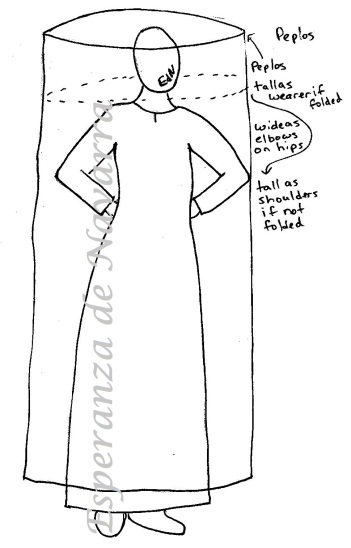
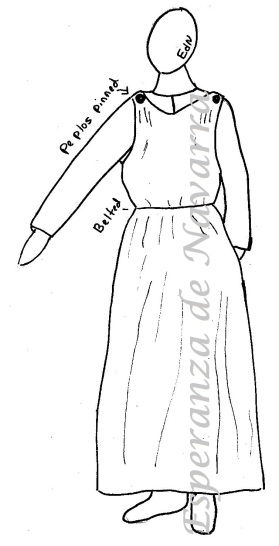
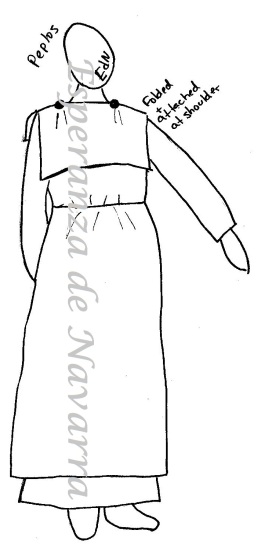
Choice 3: Hangerok / Apron-Dress
At its very basic, it’s a simple tube held on by straps that go over the shoulders. Not much different in essence with the Peplos, with the main difference of the addition of the straps.
- Fabric: wool or linen
- Straps: sewn on to back
- held on to front by brooches, usually with loops
The different styles are based not only on geographical diversity, but also on the differing opinions of the various archeologists. As of yet (and of my current research) there is no complete extant apron-dress. We have many, many pieces of the tops, especially the loops, but not enough to make a definite guess as to what the finished product looked like.
Apron-Dress Style 1
The first style is essentially a large rectangle that is wrapped around the body and held closed with loops that are connected to brooches (not shown in illustration).
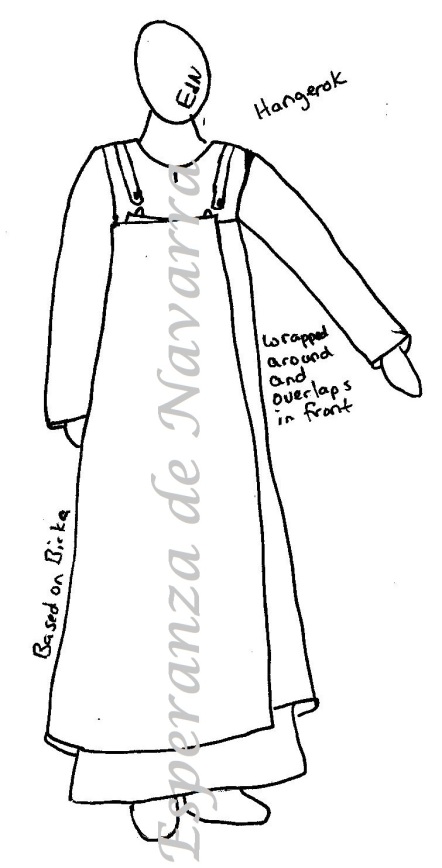
Apron-Dress Style 2
The second apron-dress is based on the finds found in Hedeby and Inga Hägg’s writing on the apron-dress. This dress has a panel in the front and back, and has one to two panels on each side. The front and back panel is more rectangular, while the side panels have a more trapezoidal shape, giving the dress more flare at the bottom.
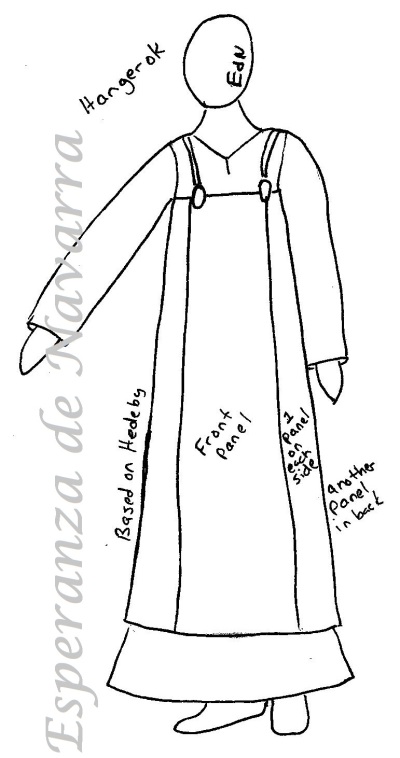
Apron-Dress Style 3
This style is based on Flemming Bau’s ideas behind the apron-dress. His idea is that the apron-dress was not closed in the front. Again, it’s essentially a rectangle, but instead of being closed in the front, it was open and usually had a simple apron completing the “circuit.” (apron not shown in illustration) The apron would hang into the brooches with separate loops.
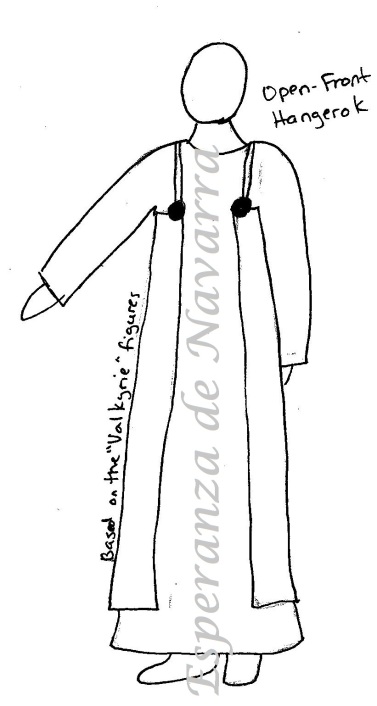
Apron Dress Style 4
The final dress is based on the Kostrup pleated apron-dress. In this style, there is a series of pleats that run across the top of the front panel. The pleated fabric gives the width to the bottom of the dress.
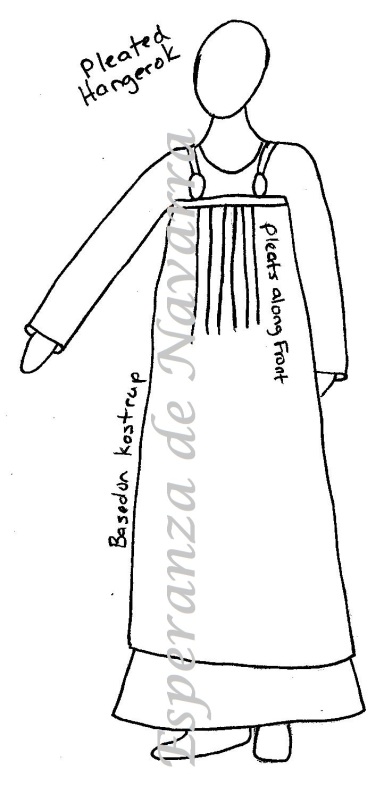
Pattern for the Hedeby Apron-Dress
